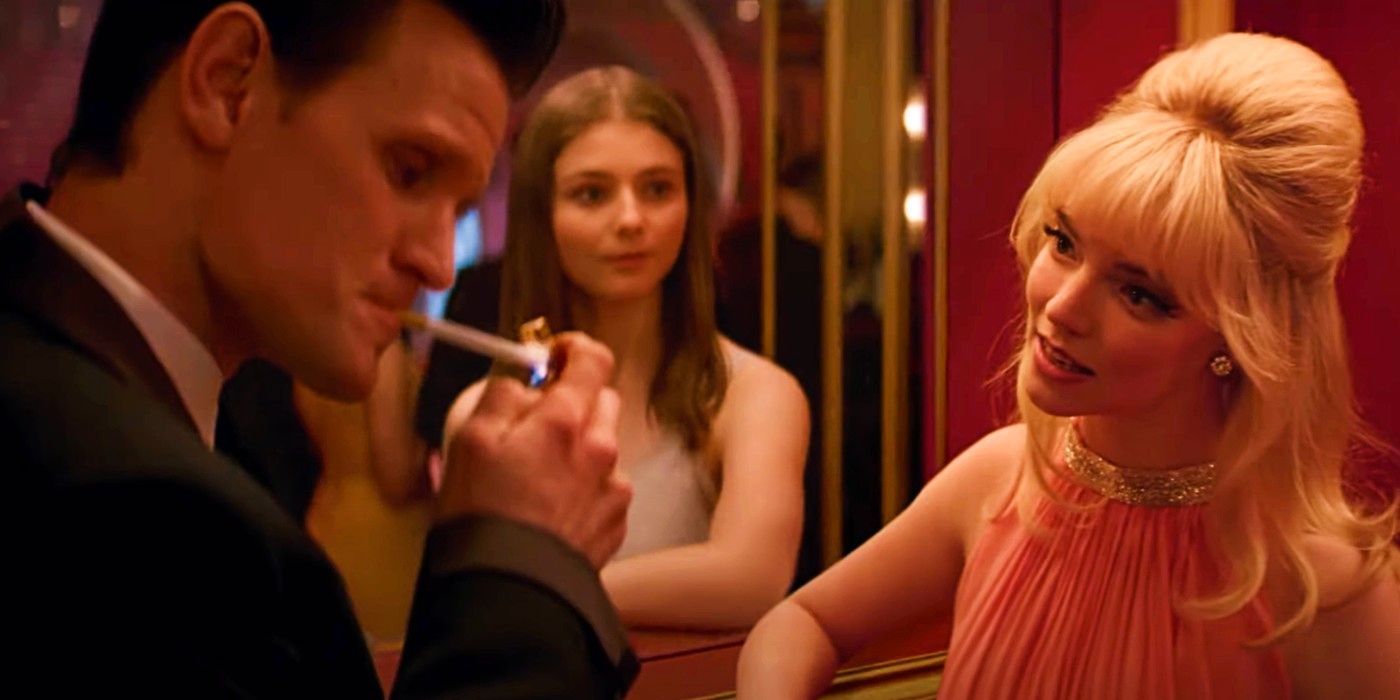
Popular director Edgar Wright makes his return to the big screen with Last Night in Soho, promising to bring Wright’s cool, funny, hip style to the horror genre this time. Last Night in Soho introduces us to Ellie (Thomasin McKenzie), an aspiring fashion designer from a small village in England headed to London to begin fashion school. Ellie has the power of empathic telepathy which allows her to see her dead mother, who killed herself after having a rough time trying to make it herself in London. In London, after renting her own apartment from Miss Collins (Diana Rigg) due to her inability to fit in on campus, Ellie soon finds that she is able to telepathically enter the 1960s, where she begins to embody an aspiring singer named Sandy (Anya Taylor-Joy). Ellie enjoys transporting to the nights out on the town in 1960s London that she always fantasized of experiencing, but soon discovers that Sandy’s life led into something far darker.
As an awkward young woman who is unsure of herself, Ellie’s gravitation toward Sandy’s life is obvious and laid out well through Wright’s direction at the start of the film, displaying Ellie’s social awkwardness, naïveté, and struggle to fit in amongst other people through her experiences in her new big city school and exposition about her mother and the fate that awaited her as she traveled down the same path Ellie now faces. Sandy and the lifestyle she leads contains everything that Ellie and her lifestyle does not, glamour, desirability, fearlessness, beauty, confidence. In retreating into Sandy’s story and past consciousness, Ellie is granted refuge from her uncertainty, her troubles, and instead enters a world where seemingly everything is all glitz and no struggle. As is common in show business however, Ellie soon discovers that everything that glitters isn’t gold and the swinging lifestyle Sandy has entered into has dark drawbacks and nefarious characters.
The trajectory of Ellie’s experience in reliving Sandy’s life is an effective allegory for how the history of abuse that women experience, particularly in the entertainment industry, can effect and come to haunt women of future generations for years to come. In the film, this haunting is literal of course, but for the women in our own world, it comes through in a loss of role models, lost opportunity, doubt from the failures of women who were mistreated or had their dreams deferred for unfair reasons, and other consequences from systemic trauma. This theme is integrated seamlessly into the Last Night in Soho‘s story without being its main focus, a change of pace from recent social commentary-tinged horror films that may represent a welcome change for many viewers. Its subtlety does not undercut its effectiveness however, creating a perfect balance of substance and entertainment.
Last Night in Soho features gorgeously colored cinematography with pitch perfect production design to match that transports the viewer directly into 60s London. The Suspiria influence in the technicolor hue that Wright imprinted on the cinematic canvas is plainly evident and feels like the perfect homage to its horror predecessor. A film centered around a fashion design student obsessed with 1960s style calls for impeccable wardrobing and the behind the scenes crew manages to knock that out of the park as well. Last Night in Soho also isn’t missing Wright’s now trademark knack for integrating a plethora of popular music from throughout the years into the film’s story and soundtrack with this one being chock full of 60s tunes that accentuate the visual care that was taken with the production and costume design.
This is a film that is engaging and features an interesting story and mystery that slowly unravels once it unveils itself in the second act. Ellie unlocking the mystery of what she sees and how it connects to the present is thrilling with horror elements rooted not in the ability to see the past, but in what means for the here and now. The characters are just as good with Thomasin McKenzie and Anya Taylor-Joy offering good performances as well as Diana Rigg’s quality supporting role. The shift in Last Night in Soho’s third act is where things get polarizing, but I found the conclusion to have been one that Wright and the film arrived through a natural progression of where the story had been progressing, rather than a jarring change in tone. The result is a stylish modern film with good horror elements mixed with a compelling mystery and a good amount of substance. A night in Soho is a good time at the movies.
Image: Focus Features

